Lansweeper Integration
This guide will help you successfully integrate a one-way sync between your Lansweeper and Asset Panda accounts. Note that the one-way sync is from Lansweeper to Asset Panda only.
NOTE: Lansweeper is a third-party application and Asset Panda does not control updates made by Lansweeper. As a result, your screens and options may vary from those you see in our examples below. See the Lansweeper API documentation for the most up-to-date technical information.
(We recommend following these processes sequentially if this is your first-time integrating Lansweeper and Asset Panda.)
This integration includes:
NOTES: You will be copying and pasting values between Lansweeper and Asset Panda during this integration. It is recommended that you paste all values into a text (.txt) file (such as Notepad) so you do not lose them if your system times out.
We’d also recommend that you open both of your accounts in separate tabs. This will make it easier to navigate back and forth between your accounts for the setup.
Integration Requirements
You'll need to first make sure you have the following requirements prior to beginning your Asset Panda and Lansweeper integration:
- Confirm that your local server instance is upgraded to the latest version (at least 10.x): https://www.Lansweeper.com/knowledgebase/updating-your-installation/.
- Link with Lansweeper Cloud: https://www.lansweeper.com/knowledgebase/link-with-cloud/.
Once these integration requirements are met, proceed to Lansweeper API Credentials to get started!
Lansweeper API Credentials
To obtain your Lansweeper API credentials:
1. Navigate to, and then log into your Lansweeper account.
2. Click your profile icon (located on the bottom left of your screen), and then select Developer tools.
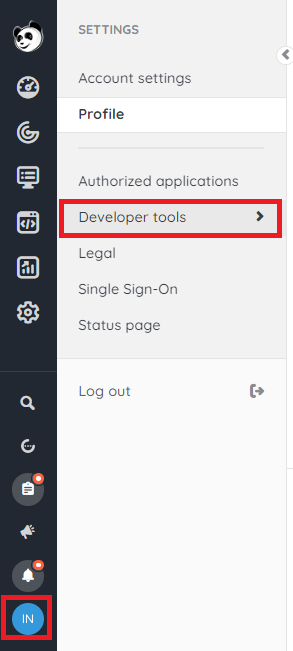
3. Select All API Clients, and then select Add new API Client.
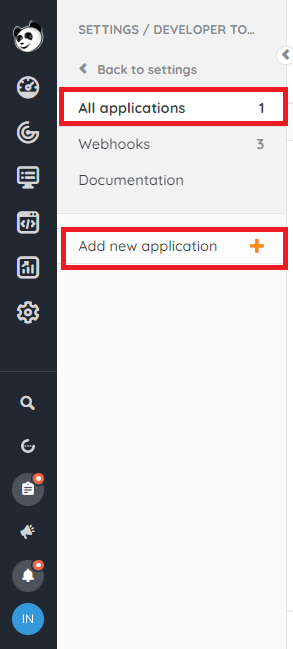
4. Select OAuth as the API authentication method from the Add new API Client window, and then fill in other details.
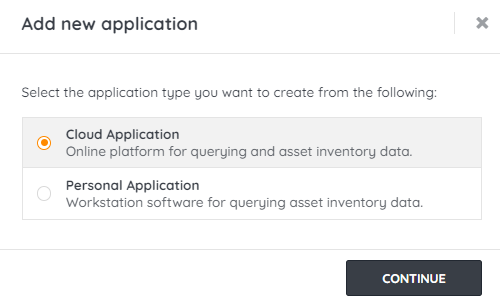
5. Enter your preferred API client name, and then enter https://login.assetpanda.com/integrations?tab=authorize_code as the Allowed callback URL and add/select Asset Panda in the Developed by and Integration fields.
Note that all mandatory fields are notated with an asterisk (*).
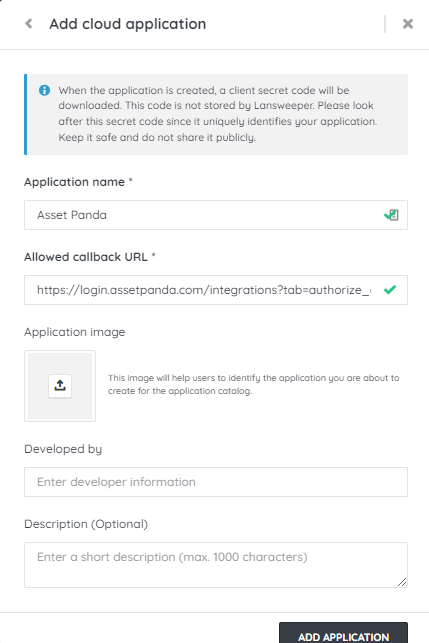
6. Click Continue.
After clicking on continue, the system automatically generate a Client ID and Client Secret. You can click on Download Credentials which will download a .txt file with the necessary information (client ID and client secret) you will need for authentication. Make sure you keep them in an accessible location, because you’ll need them again for your Asset Panda integration.
7. Click to select your new API Client from the All API Clients page.
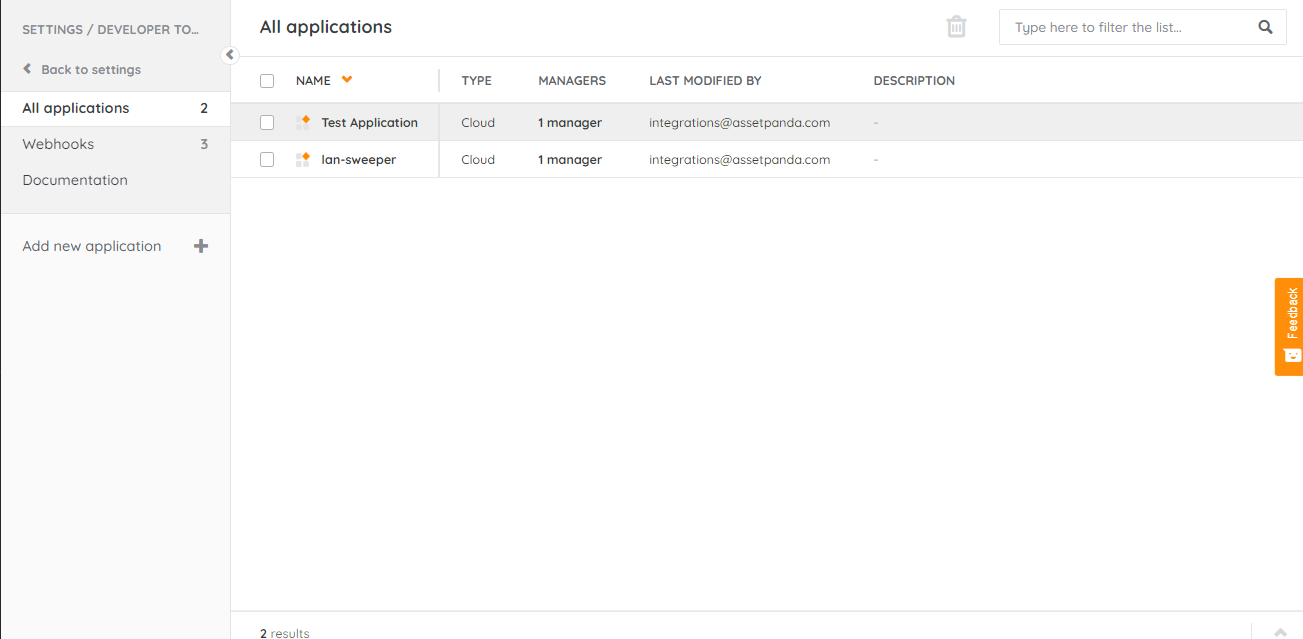
8. Proceed to the Asset Panda Integration section below. (We recommend opening a separate tab for Asset Panda, while keeping Lansweeper open. You will need to navigate between the two.)
Asset Panda Integration
Before you begin, we recommend opening a separate tab for Asset Panda, while keeping Lansweeper open. You will need to navigate between the two.
To complete your integration on the Asset Panda side:
1. Log into your Asset Panda account.
2. Click the settings  icon, and then select Integrations.
icon, and then select Integrations.
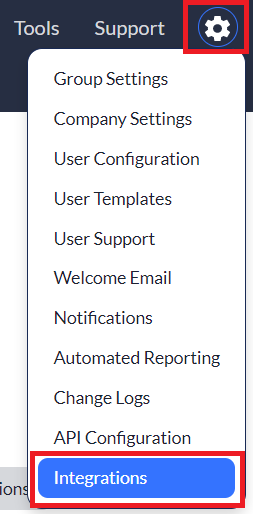
Settings
Complete the following steps to successfully link your Asset Panda and Lansweeper accounts.
1. Select Lansweeper from your available list of integrations, located on the left side of your screen, and then click Settings tab.
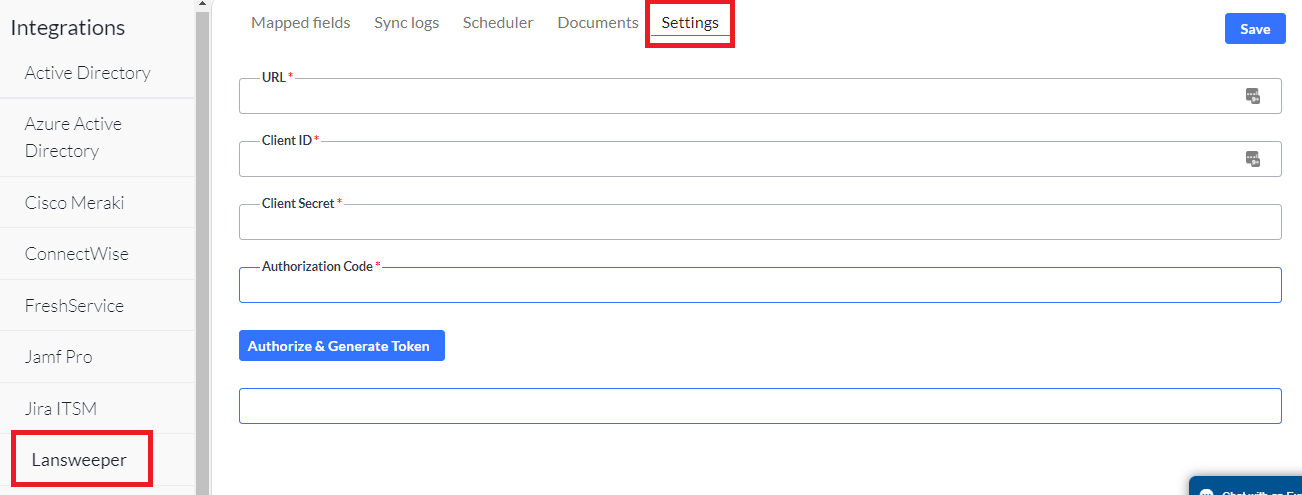
2. Open your .txt file that contains your Lansweeper client_id, and client_secret (from the Lansweeper API Credentials section).

3. Copy your client_id, and then paste it into the Client ID field within your Asset Panda settings.
4. Copy your client_secret, and then paste it into the Client Secret field within your Asset Panda settings.
5. Enter the URL you used for the Allowed callback URL (https://login.assetpanda.com/integrations?tab=authorize_code) into the URL field.
6. Navigate back to Lansweeper, and then click the Authorize button (located next to your Authorization URL field) to obtain your authorization code.
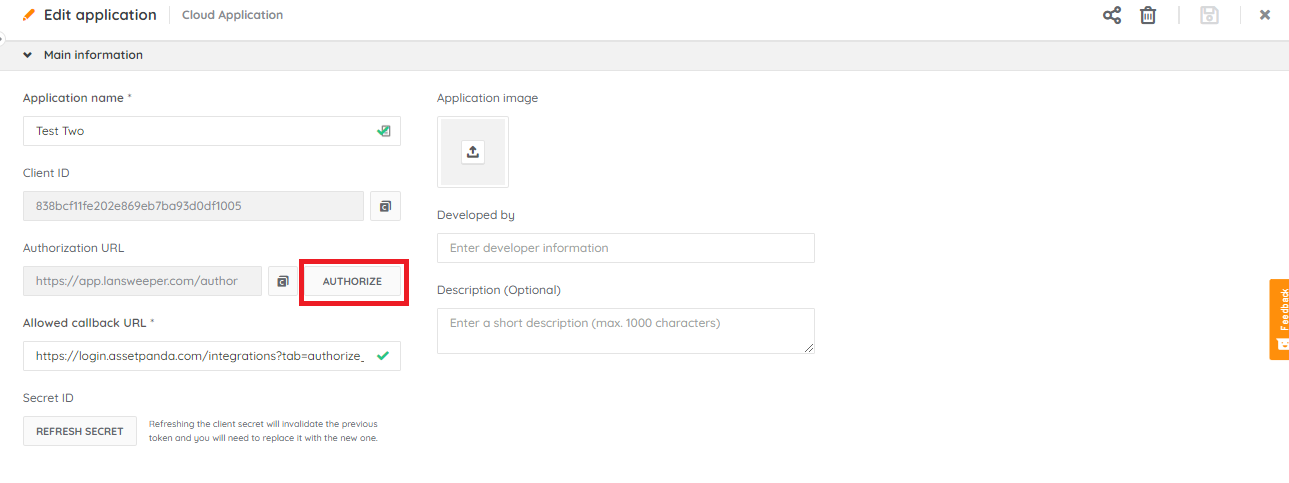
7. You’ll notice that your authorization code opens within Asset Panda. Click the Copy to clipboard button.
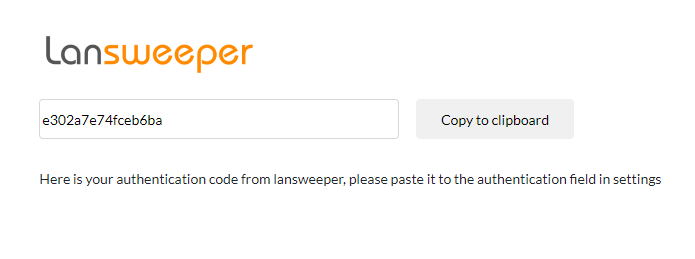
8. Select Lansweeper from your integration navigation menu, located on the left side of your screen, click your Settings tab, and then paste the code into the Authorization Code field.
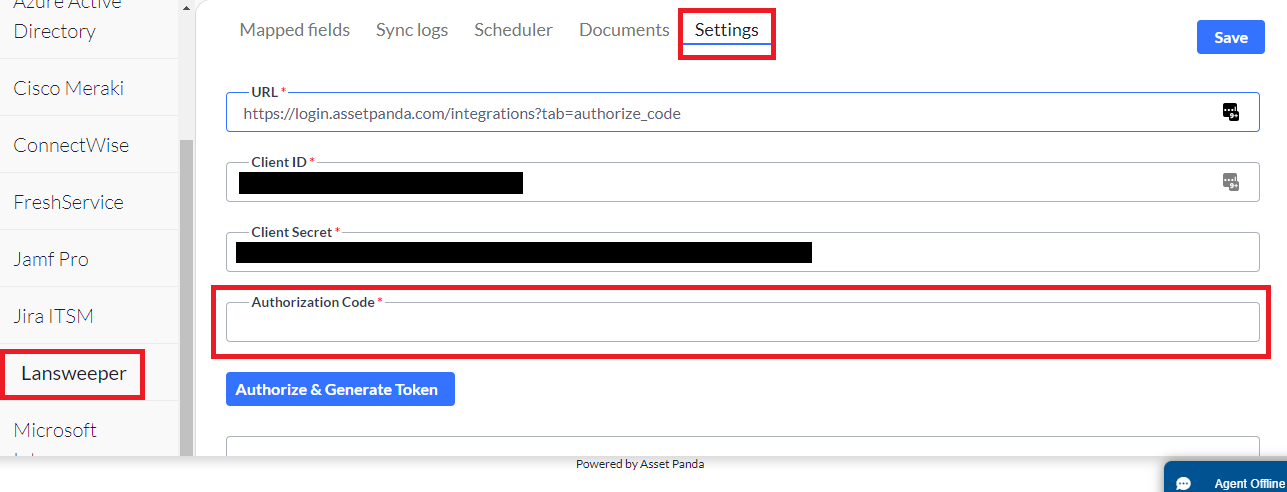
9. Click Authorize & Generate Token, and then click Save.
Your Asset Panda and Lansweeper accounts are now linked.
Mapped Fields
Use the following instructions to configure your mapped fields within Asset Panda. Remember that the sync is one-way, and only syncs from Lansweeper to Asset Panda.
NOTE: To prevent the duplication of records, the following fields must be defined as unique and not include a blank value:
- Device (computer, mobile, and other devices) - link with the serial_number field
See Unique Rule for more information about unique fields.
Click the Mapped Fields tab, and then select Add new mapped field.
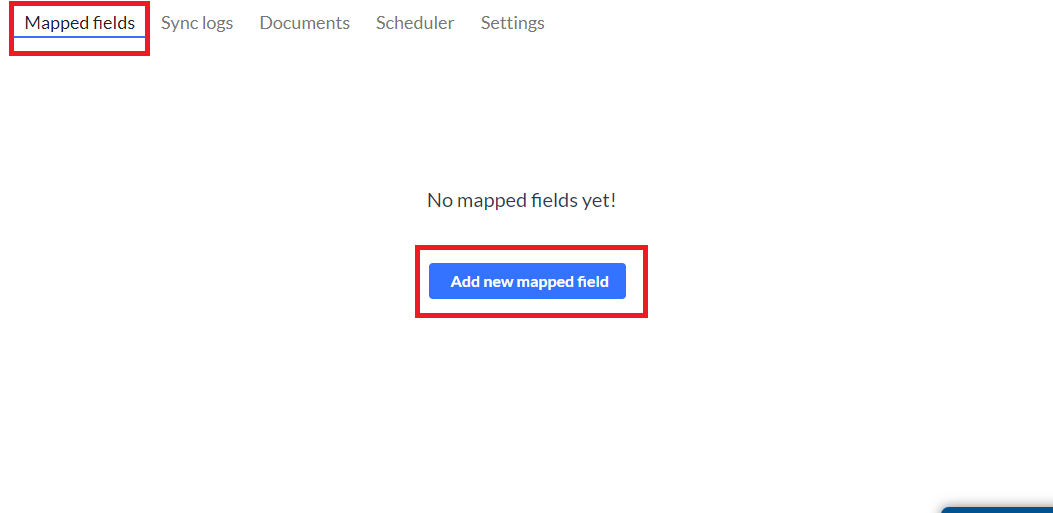
Use the following drop-down menus to:
1. Select the Entity (from within Asset Panda) and External Entity (from within Lansweeper).
2. Select your Organization Unit.
3. Select the fields you wish to Map from Lansweeper and Map to Asset Panda.
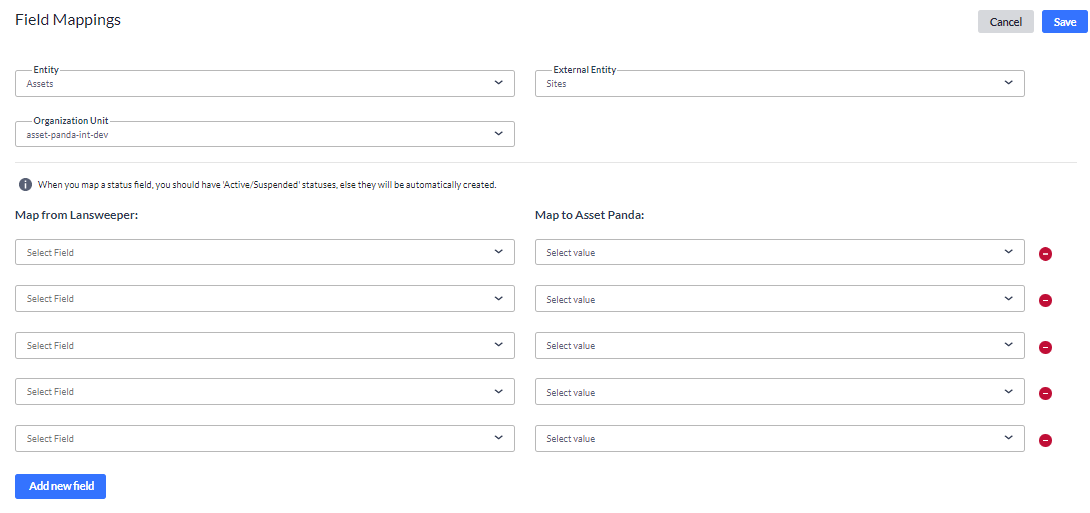
4. Click Save.
5. From the Mapped Fields page, click Sync now. (This pulls/syncs your information from Lansweeper into Asset Panda.)

Your items begin to synchronize and you will receive an email once it is complete.
NOTE: All sync information can be viewed by clicking the Sync Logs tab. See the Sync Logs section below for more information.
You can view your linked devices from within your Asset Panda groups.

Sync Logs
Your Sync Logs store all your syncing information and are divided by year and month.
1. Click the Sync Logs tab, and then select your desired year and month to expand your logs for the specified timeframe.
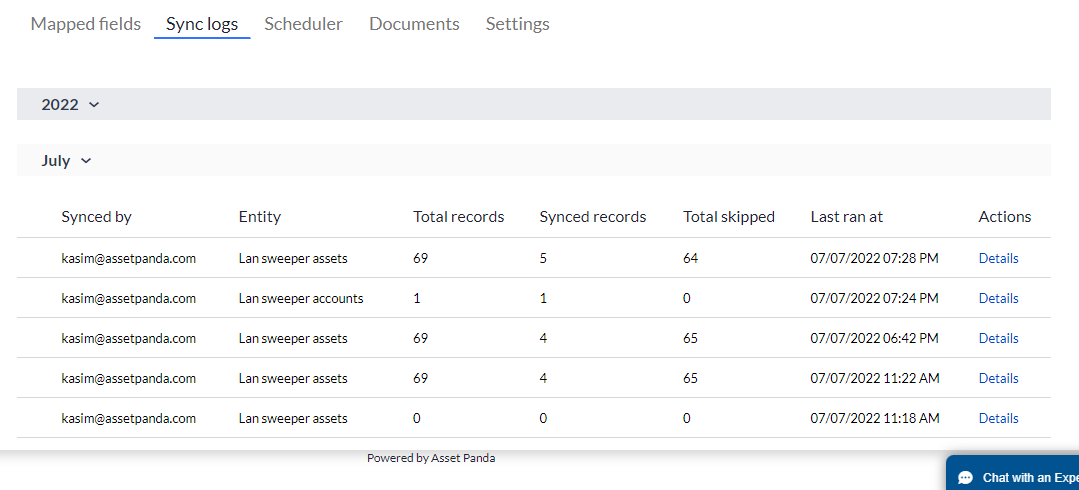
2. Click the Details link to view a more detailed log of sync information.
Schedulers
Use the Schedulers feature to set up automatic sync schedules. (You can choose when and how often your syncs occur.)
NOTE: A maximum of two schedules may be added at any given time. At least one must be deleted if you find the need to setup new schedules.
To begin:
1. From the Lansweeper page, click the Scheduler tab.
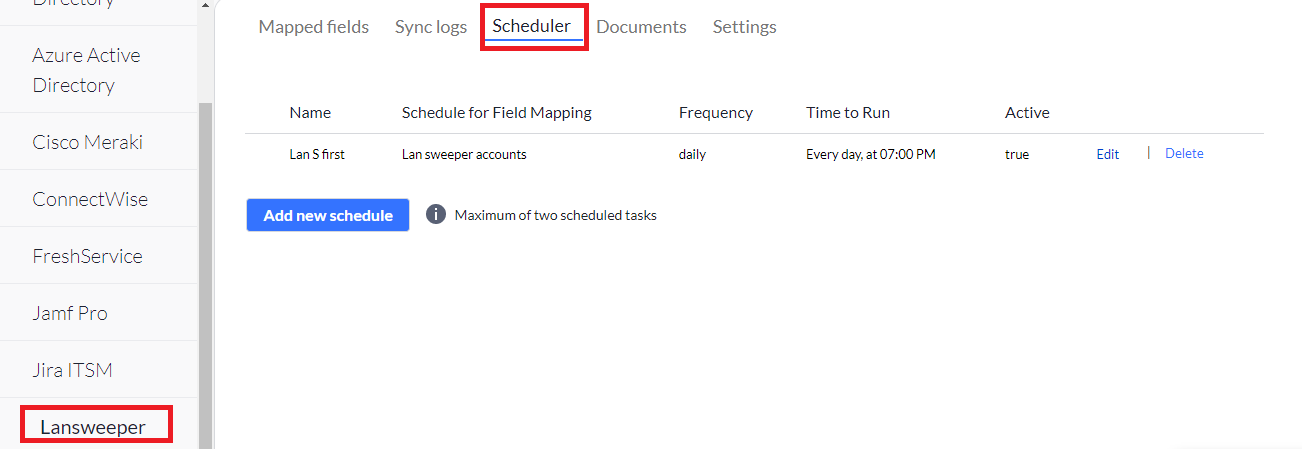
2. Click Add new schedule to add new schedules. Note there is a maximum of two scheduled tasks.
The Add Lansweeper Schedule page displays.
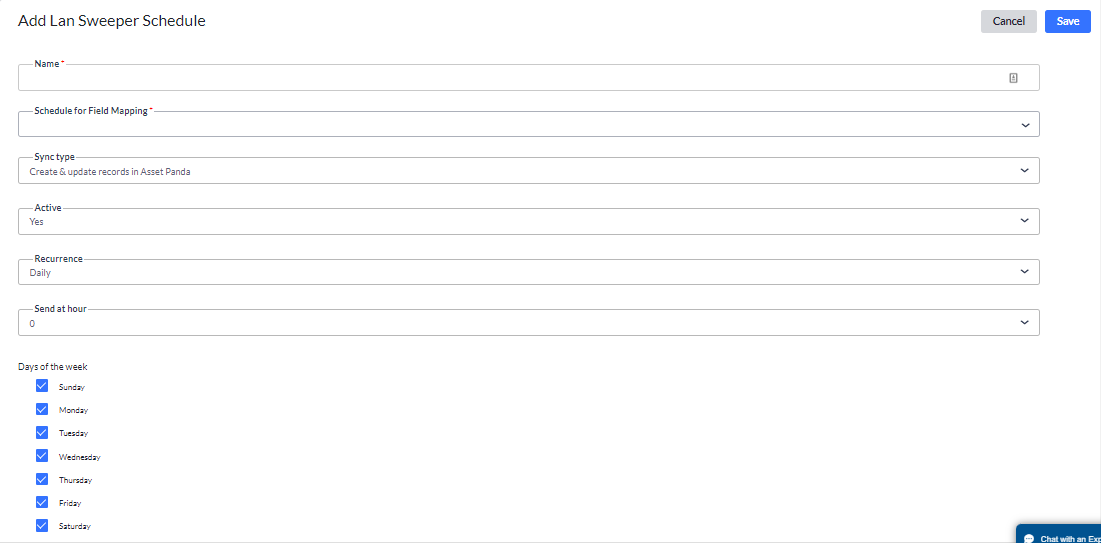
3. Enter your preferred scheduler name into the Name field.
This is a required field.
4. Use the Schedule for Field Mapping drop-down menu to select the group you wish to sync to.
The groups included within this drop-down menu are pulled from fields you mapped within the Mapped Fields section. This is a required field.
NOTE: You must create a schedule for each group.
5. Use the Sync type drop-down menu to select your preferred sync type.
6. Use the Active drop-down menu to select Yes, and to activate your scheduler.
7. Use the Recurrence to select:
- Daily – Select Daily, the hour, and day of the week.
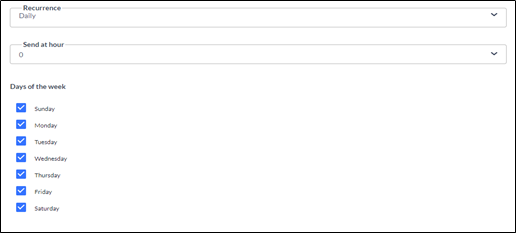
- Weekly – Select Weekly, the hour, the frequency, and day of the week.

- Monthly – Select Monthly, the hour, and the frequency (includes the frequency of the month such as every month, every other month, etc., and the day of the month).

- Yearly – Select Yearly, the hour, and the frequency (includes the specific month and day of the month you wish to schedule).

8. Click Save.
Your new schedules display.

NOTE: Remember that there is currently a maximum of two scheduled tasks. You will be unable to select the Add New Schedule button once the maximum amount has been reached.